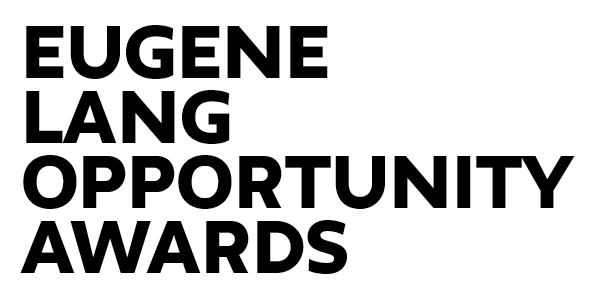With funding from the New School, I recently traveled to Stillwater, Oklahoma to conduct primary source research for my senior thesis. Concerned with South Asian presence in the U.S. Southern Midwest during the mid-twentieth century, my overall thesis is rooted in understanding why such individuals found themselves in such a remote part of the country and how they experienced such an environment.
 (Rita Chesnut, Denois Daruvali (Pakistan), Callen Stevenson and Tycine Lyons in a teaching methods class in 1958 – Courtesy OSU Archives)
(Rita Chesnut, Denois Daruvali (Pakistan), Callen Stevenson and Tycine Lyons in a teaching methods class in 1958 – Courtesy OSU Archives)
Before my trip, I began investigating my grandfather’s personal history. He was born in Lahore, Pakistan in 1928. Working in New Delhi in 1947 at the time of partition, he was one of many muslims put on trains traveling back to Pakistan from India. Ten years later, in 1957, he migrated to the United States to follow a similar path as his younger brother, studying civil engineering at Indiana Institute of Technology. While his visa was contingent on studying civil engineering alongside his brother, he had a contact in the Pakistani government who could offer him a great civil service job in agricultural economics. With this in mind, my grandfather sought out accredited U.S. universities that offered degrees in agricultural economics. Once he left Indiana, he studied at Kentucky State University, an HBCU in Frankfort, Kentucky for one year. After a year in Kentucky, he found himself in Stillwater, Oklahoma, enrolled in a great agricultural economics program where he would eventually meet his wife, my grandmother– a white woman from Tulsa, Oklahoma.
 (Letter to J.L. Sanderson at Oklahoma State University from the Government of West Pakistan, dated July 15, 1965 – Courtesy OSU Archives)
(Letter to J.L. Sanderson at Oklahoma State University from the Government of West Pakistan, dated July 15, 1965 – Courtesy OSU Archives)
While my grandfather never returned to Pakistan for his promised civil service job, I was perplexed as to why he would counter typical narratives of foreign immigration–settling on the coasts in large, metropolitan centers–and root himself in the U.S. Southern Midwest. Thus, the topic for my undergraduate thesis was born. I began researching immigrant communities present in this region pre-1965. The Immigration Act of 1965 removed immigrant quotas from global regions–specifically South Asia. Before 1965, the amount of immigrants from certain regions and countries was limited and strictly enforced.
To my amazement, I found larger immigrant populations than expected in the Southern Midwest pre-1965. Through archival research, mainly utilizing yearbooks, I found Muslim Student Associations, India Student Associations, Pakistani Student Associations, Foreign Student Events, and so on. Armed with the knowledge of the existence of such groups, I began looking through online archives available by the same institution where my grandfather met my grandmother. Because much of the documents regarding these groups and programs are not digitized, I petitioned to the school to fund a research trip to Stillwater, Oklahoma so I may further my archival explorations.
Thankfully, the New School approved my petition and I was off to Oklahoma. Over the course of five days I viewed well over 4,000 pages of documents. The amount of information I found pertaining to the specific questions I have relating to my thesis was astonishing. Because of my trip, I was able to view everything from firsthand accounts of life in Pakistan written by professors at Oklahoma State University in the early 1950s, to grants and scholarships given to prospective Pakistani students to study in the U.S. in the 1960s. I found budgets, receipts, and memorandums relating to surveys conducted in Pakistan by Oklahoma State University. I was able to travel to Oklahoma City and find specific news articles from the 1950s on microform, detailing Pakistani presence in Oklahoma, as well as U.S. presence in Pakistan–all because of foreign educational exchange programs funded by the U.S. government and the Ford Foundation.
 (Contract detailing employment regulations for employees from Oklahoma State University living and working in Pakistan to advise and oversee future educational initiatives, dated April 1, 1958 – Courtesy OSU Archives)
(Contract detailing employment regulations for employees from Oklahoma State University living and working in Pakistan to advise and oversee future educational initiatives, dated April 1, 1958 – Courtesy OSU Archives)
It is hard to contain my findings into a short blog post, however, I have much more space to analyze the products of my research trip within the pages of my undergraduate thesis. In short, the trip was an extreme success and I cannot wait to delve into the sources I have found to produce an independent and original piece of academic research.


